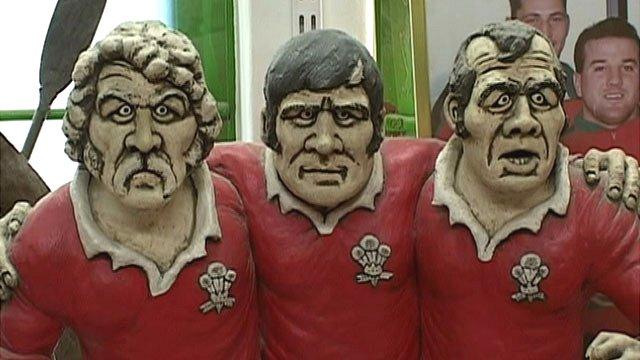Six Nations rugby games set to spawn new Grogg heroes
- Published
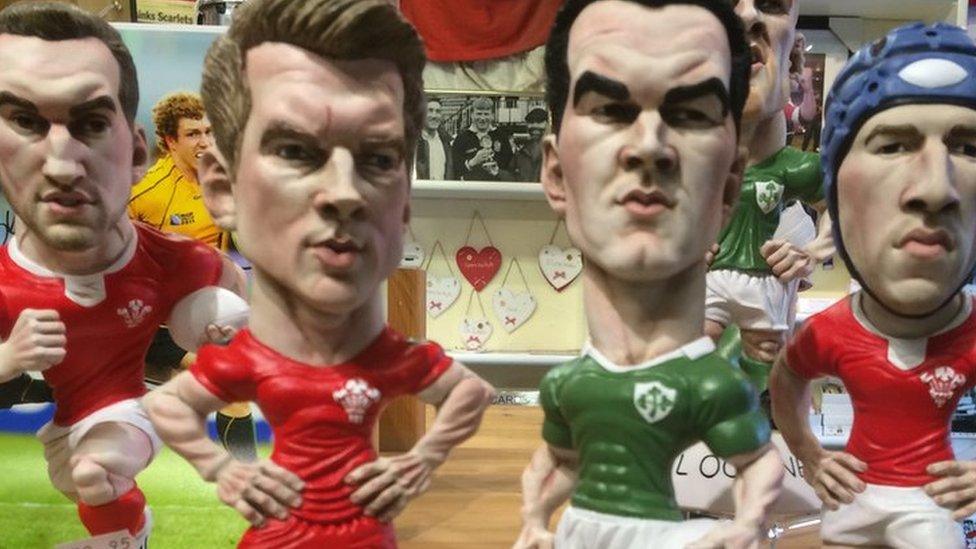
Predicting who will perform well and be the biggest-selling Grogg during the Six Nations is a difficult task
Performer Max Boyce once famously sang about pubs running dry on a glorious Welsh rugby day.
But beer is not the only thing that success on the pitch can leave in short supply, with stocks of a very different type of grog currently low.
A television programme to mark Pontypridd's Grogg Shop's 50th anniversary, followed by the World Cup and Christmas have left the shelves sparsely populated.
"People came from around the world to see where they were made during the World Cup," said Richard Hughes, 56, who crafts every rugby figure by hand.
"It is a bit heart-breaking that during the Six Nations, people will come and we won't have a full display.
"We are trying to replenish but we have such a massive range, it's hard to keep everything in stock."
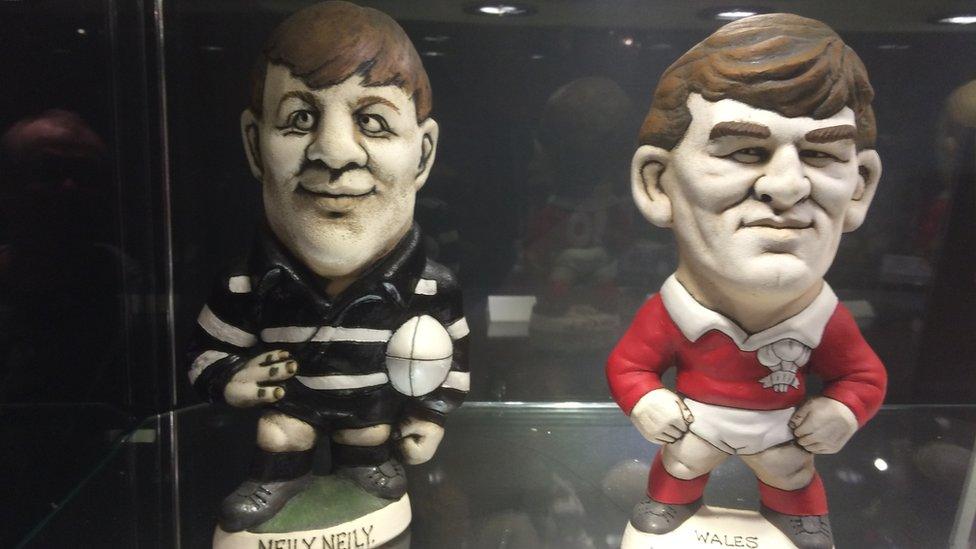
The parents of local hero Neil Jenkins paid for a Grogg to be made of him for his 18th birthday. A year later, he made his Wales debut and another version went on sale

While Mr Hughes describes Neil Jenkins as his favourite player, he says Richie McCaw "changed the game", with rugby "all about the number seven not 10"
The process starts as an idea of how a player's Grogg should look, with Mr Hughes then working to create the perfect master figure.
It is then sent to be cast at a factory in Maesteg, before replicas are hand-painted by a team of five, with the whole process taking about 10 weeks.
But the "extraordinary" exploits of Dan Biggar at the World Cup have changed the timescales.
During the tournament, he not only took over place kicking duties from Leigh Halfpenny, but also his mantle as the most popular figure.
With efforts focusing on keeping up with demand for him, other work is on the backburner - with a five-month wait for a new Warren Gatland figure.
Mr Hughes said: "I was really worried because I was working on his figure when England started mentioning him as their possible new coach.
"If he had gone back to New Zealand, people wouldn't have minded.
"But as England coach, nobody [in Wales] would have bought it."
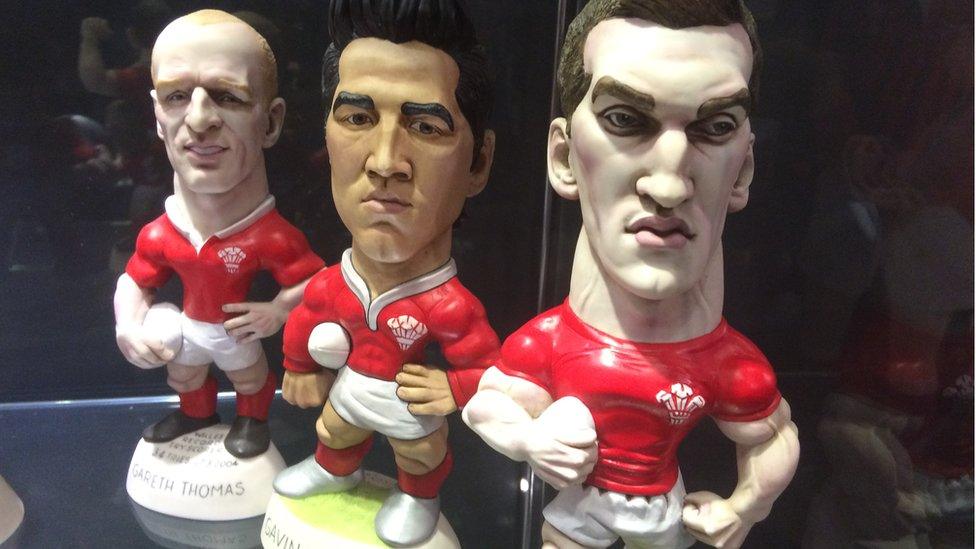
A 2005 Gavin Henson Grogg (centre) was in high demand
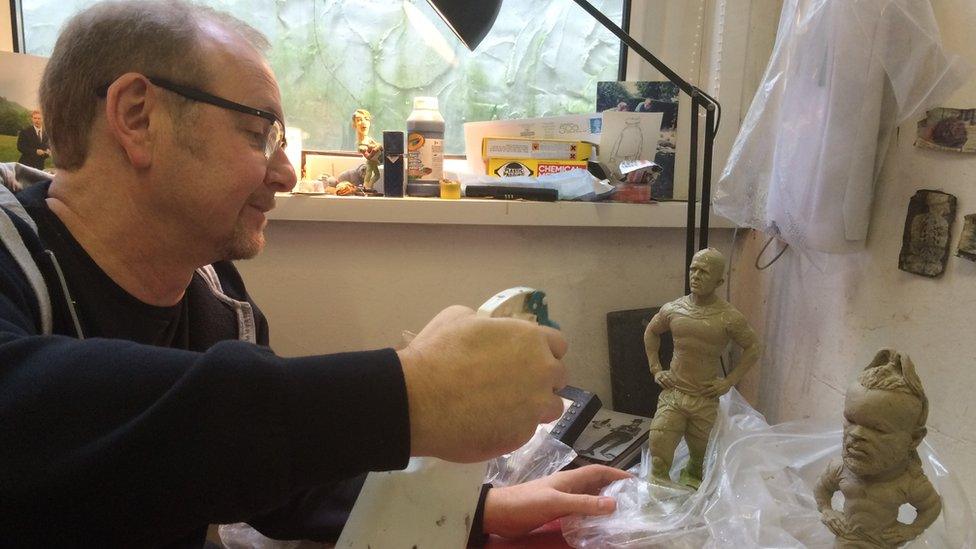
Mr Hughes works on 'the saddest figure ever' of Shane Williams and a dreadlocked Mathieu Bastareaud
With a new figure costing about £10,000 to put into production, deciding who to focus on ahead of this year's Six Nations has been, as always, an almost impossible task.
The quickest-selling Grogg was a 2005 version of Gavin Henson, produced just before his exploits in that year's opening Six Nations game. The 500 made are the only ones to ever be sold before making it on to the shelves.
But, on the whole, Groggs that will prove popular remain as hard to predict as Welsh results.
As a joke, Mr Hughes even bought sister Cathy, who runs the shop with him, a crystal ball for Christmas.
"When Graham Henry came over as coach, we went to Scotland and lost, before losing to Ireland at Wembley. So I thought he wasn't going to last long.
"We made just 200, thinking, 'who will buy it?'
"But then we won in Paris for the first time in 25 years and beat England at Wembley, before going on an 11-match winning streak.
"The 200 figures quickly disappeared and it was one of the dumbest things we've done."
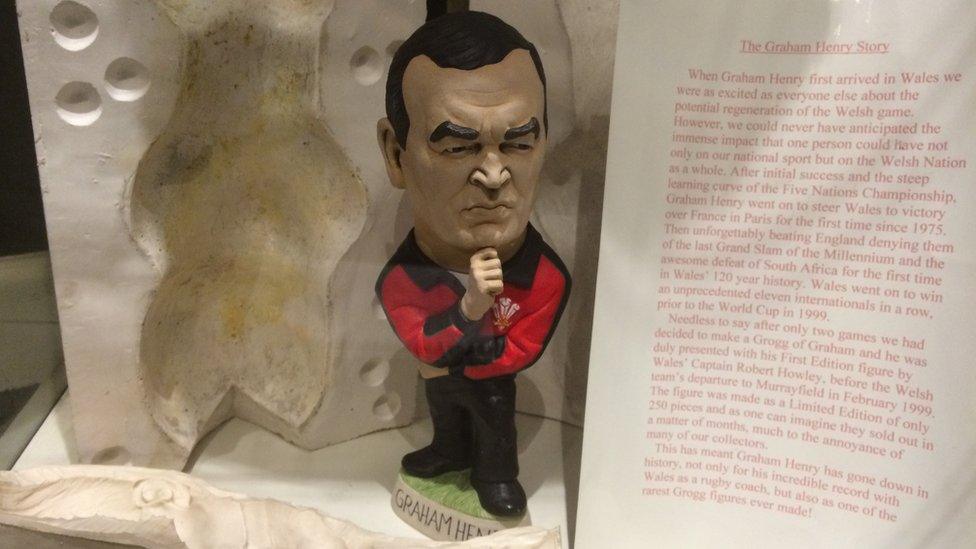
After only 200 of the original Graham Henry Grogg were made, it remains one of the rarest
From the pages of the Mabinogion to Grogg shop shelf
There are others that will never see the light of day and Mr Hughes describes Shane Williams' retirement Grogg as "the saddest figure I ever started".
"He has the 'Diolch' shirt on [that he wore in his last game] and there is a ball on the floor he is walking away from. People went nuts about the idea," said Mr Hughes.
"But the following Spring [in 2012] we won the Grand Slam and other things took over. I keep taking it out of the bag and trying to finish it, but I probably won't get time now.
"It's quite tragic as I have done most of the work."
But one man whose figure will be completed is Japanese World Cup hero Ayumu Goromaru, even though Mr Hughes admits the detail of his Grogg is "driving me nuts".
"They've become part of our culture, cherished and hugely collectable"
While in many senses modern rugby players resemble super heroes, it was giants from the children's books The Mabinogion, that were the inspiration behind the business.
It was models of these that Mr Hughes' dad John, who died in 2013, started trying to sell in the 1960s, with little success.
But he then placed Welsh rugby jerseys on them and everything changed.
Bitten by the ceramics bug, at 12, Mr Hughes sold a model gorilla he made following a visit to Bristol Zoo and joined the business at 16.
"The stars of the 1970s, people like JPR and Barry John, who were like gods not human beings, used to come to the shop.
"But I couldn't say to children in school 'guess who was in my house yesterday?' as nobody would believe it."
Players still visit the shop and Mr Hughes said they realise "it goes beyond a cap", adding: "As my dad used to say, 'once you've been Grogged, you'll never grow old or be forgotten'."

Where it all started - Richard Hughes, aged 12, working on the gorilla, which was the first thing he made
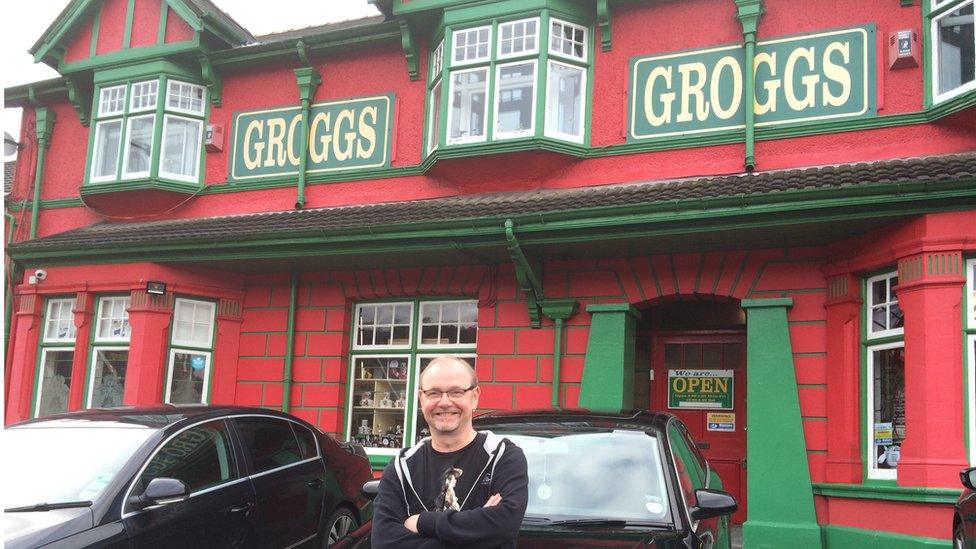
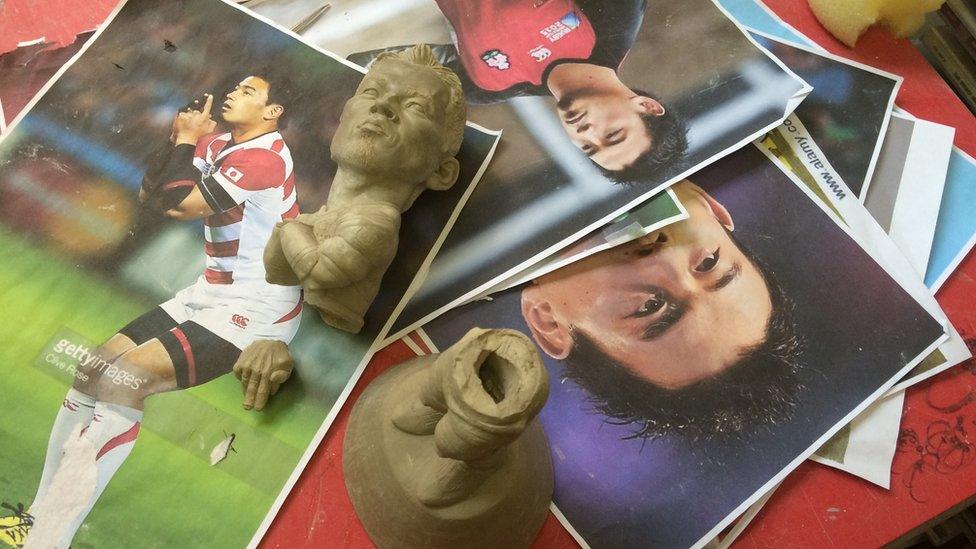
Mr Hughes hopes to finish a Grogg of Ayumu Goromaru, hero of Japan's World Cup victory over South Africa, ahead of the team's visit in November
- Published19 June 2013
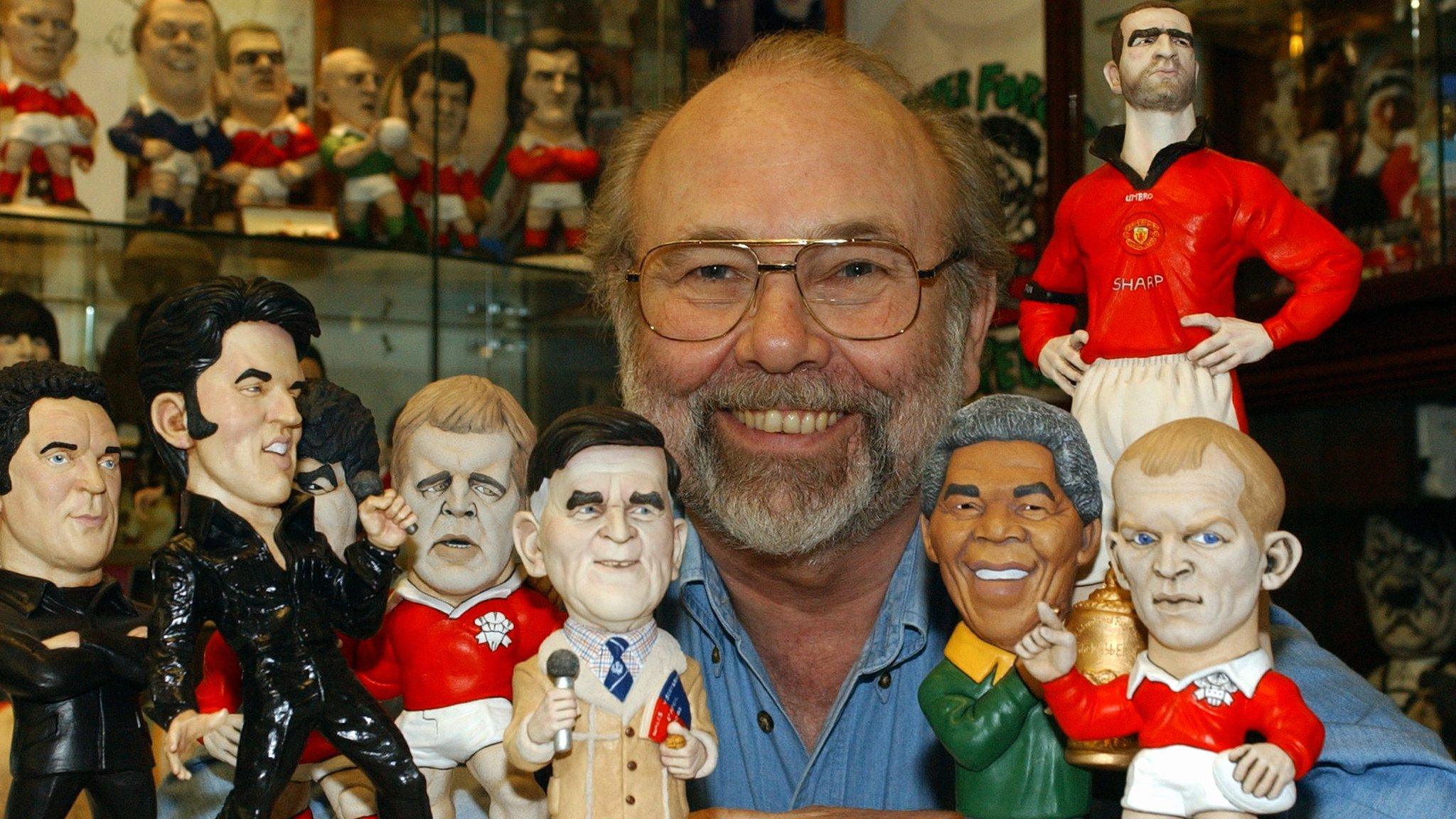
- Published12 June 2010
- Attribution
- Published2 April 2015
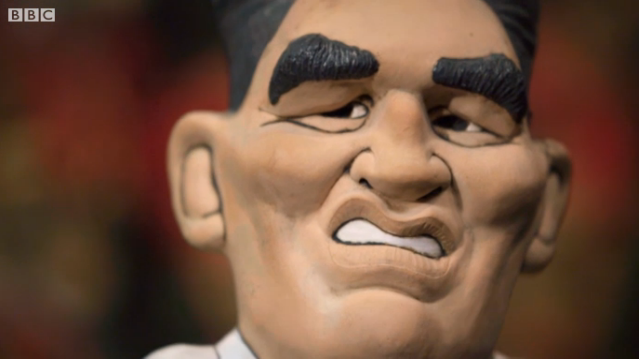
- Published19 June 2013
